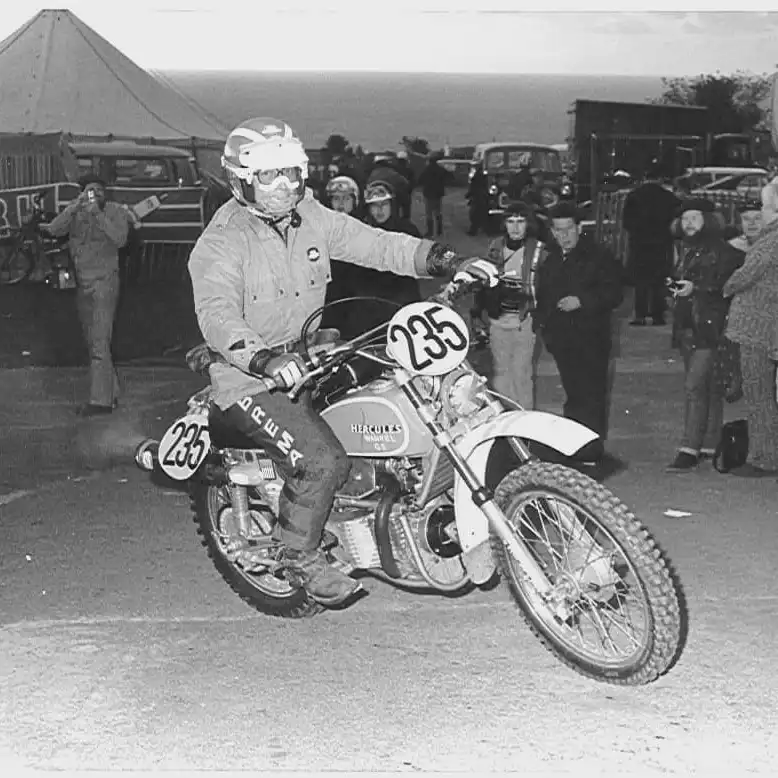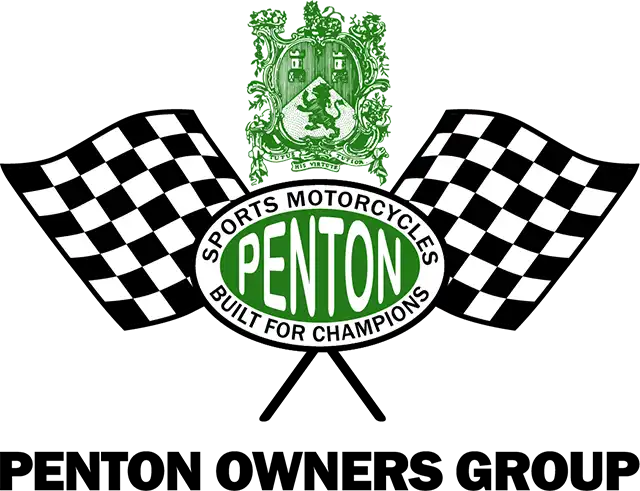Doug Wilford
Penton Rider Profile
by Alan Buehner
Originally printed in the 2001 issue #10 of Still….Keeping Track
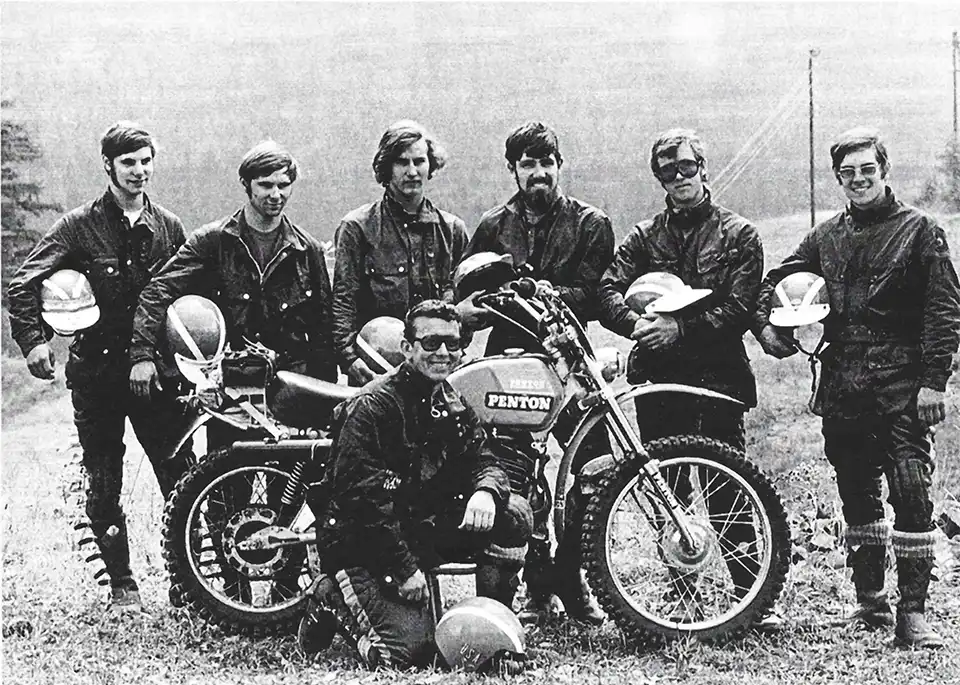
Photo by Jerry West
Doug Wilford is one of those low key, quiet, kind of guys that is unpretentious when you see him. But once you get him talking, you discover a wide range of talent, experience, and knowledge regarding Penton motorcycles.
Doug worked for John Penton from 1966 thru 1973. He was there when the idea of the first Penton motorcycle surfaced and when it all became a reality on the arrival of the first Penton Motorcycle. Working with Ted Penton in the sales and service department of Penton Imports, he helped solve the gear shifting problems with the Sachs engines.
His riding ability is world class. In 1970 he won an I.S.D.T. Bronze medal in El Escorial, Spain. In 1973 he won an I.S.D.T. Gold medal in Dalton, Massachusetts. In 1974 He won an I.S.D.T. Bronze medal in Camerino, Italy. The work load of the sales and service department were too great for him to attend the I.S.D.T. in 1971. After winning the National; Qualifiers in 1972, he gave up his I.S.D.T. ride to be a Team manager. As the US Trophy Team manager in Spinderuv Myln, Czechoslovakia his efforts were rewarded with the team being awarded with the "Watling trophy". (This trophy is in the AMA Museum and is awarded annually in recognition of best effort or most improvement during I.S.D.T. competition). It was the only time any US team has ever received this award.
Doug rode the 125 Penton during the time he worked for John Penton. The National Enduro series and the National Qualifying series were the main object of promotion for Penton. Doug had many class wins, a National Enduro Championship, and in 1971 missed the overall championship at the "Jack Pine" enduro by one point, losing to Ron Bohn on a 400 Husky. He was also the winner of three Berkshire medals - 1969, 1970, and 1972; and three gold qualifying medals ( 1972 at Trask Mountain and Busted Piston, and 1973 at Trask Mountain).
After Doug left Penton Imports, he went to work as Manager for Puch and continued riding Puch in the qualifiers and in 1974 rode a 175 Puch to a Bronze medal in Camerino, Italy. While at Puch, the Puch factory discontinued exporting motorcycles and the owner of Puch then started to import Hercules and Doug then continued to ride on the Hercules and was chosen by Hercules to ride the Wankel GS motorcycle in the 1975 I.S.D.T. at the Isle of Man in England. Only three of these bikes were made, one for Doug an American, one for Fritz Witzel of Germany, and one for Ivan Saravesi of Italy. Doug's was the only Wankel running at day four, when Doug retired with cracked ribs he received in a crash on day three.
After leaving Hercules in 1975, Doug left the motorcycling business and hip hopped from different jobs until retiring as a truck driver for lvacare Corp. in 1999.
To obtain more details about Doug for this article, I sent him a list of questions to answer and this is what he had to say:
What was your first bike?
"By bike I take it that you are talking motorcycle, right? Okay, it was a Whizzer that I bought for $50 from my paper route money. It wasn't the complete factory made model, those didn't come out till later. This was a kit that I put into my Schwinn Phantom framed bicycle."
What year was it and how old were you at the time?
"I think I was 13 or 14 maybe, that would be 1951."
In the book, John Penton and the Off Road Motorcycle Revolution, it was mentioned that you road a Whizzer in your first Jack Pine enduro. Tell us about it.
"That would take a lot of space, it could be a book on the adventures of a kid 16. You have to realize the environment that I was in. Amherst may be the Sandstone Center of the World, but it was also the heart of many motorcyclist. At sixteen I had helped build two club houses for the Amherst Meadowlarks. Most of my friends had a motorcycle of some sort, Cushman, Whizzer, Dot, James, Bantams, Hummers, Arials, Matchless, BSA's, and Harleys. I knew and rode with John, Bill, Ted, Ike (Pentons) and a lot of others. So signing up to ride Jack Pine was just a part of the equation. I had support crews, spectator crews, and a lot of friendly people to rely on. At sixteen there is no fear of something going wrong, there is just no fear, but a lot of anticipation, a sleepless night before the start, etc. To shorten the story, the Whizzer factory was there with 4 bikes and lots of spares. I finished, they didn't, end of story. There are a lot of great memories though."
Tell us your story about the first time you saw John Penton.
"Gees, I think I was 12 in the summer of 1949. Amherst has a lot of sandstone quarries and these make perfect fresh water swimming holes, of which every kid in town swam. This one particular quarry that I was going to with some buddies was at ground level and was usually much warmer (water temperature) than the others. But it had a long old two track that you had to walk or ride a bicycle to get to. Halfway up this path was an old timber bridge with all the planks missing, with only two big logs left of what was the bridge. The bridge wasn't real high, 6-8 feet maybe, but still you had to be careful not to fall off. As my group approached the bridge, we heard a motorcycle coming up the path. We stopped and got off the path in anticipation of what this motorcycle was going to do when it got to the bridge. Well, it never even slowed down. It went across one of those logs, didn't miss a beat, and there were two people on it. You talk about shocked, impressed, or whatever, that was something. Getting to the swimming hole, I found out that these two nuts on that Harley were Bill and John Penton. They were first impression daredevils!"
In 1966 you went to work for Penton Brothers. How did you get to be hired and what did you do there at that time?
"After 8 years in the military (USAF 1954-1962) I came home and got a job at the ship yard in Lorain, Ohio as an outsjde machinist. In 1963 I bought a Honda CB160 to make an enduro bike. John and Ted both were curious as to my choice. Bill Baird was winning all the enduros on a Triumph. My reasoning was it was a twin cylinder with the same power delivery but lighter and smaller. I began winning on this thing immediately. Other people saw what I had done and there began to be more Honda 160's showing up. Penton Brothers chief mechanic, Ralph Haslage, built one, then John Penton built one. John zeroed the Stone Mountain National Enduro on his Honda 160 on his way to Daytona. I think it was 1965 just before he started riding Huskys. The ship yard was mostly winter work, so I would work for Penton Brothers part time in the summer, until 1966 when I was hired full time as a mechanic."
When the Penton motorcycles came into the country in 1968, what was your job at Penton Imports with these new machines?
"Mostly I worked the warehouse, unloading the containers and shipping the bikes to the dealers, or setting up bikes for the riders. My Honda had spit me off so many times that I had stopped riding (from 1967 to 1968). Ted Penton was busy on the road setting up dealers and doing service work and I soon was working with Ted doing service work. Then we made the Research and Development (R & D) and I spent most of my time with Ted on R & D and service work, the shifting problem was just one of many were having and there was just Ted and I trying to play fire fighters. We hired John Cobb and I trained him to take over the service department in house while Ted and I went out to the dealers to take care of all the problems and set up new dealers. The R & D shop, and Ted Penton were the key to much of the Penton success. If there was a problem, he or we found a cure. The input was there, as all the race bikes, and riders, everything was right there, the machine shop, welding, fabricating, even our vehicle maintenance."
From my talks with you during the last 3 years, I consider you to be a serious and creative competitor when it comes to preparing your bikes for an event. Everything was well thought out and planned in advance by you which shows that you are not one of those "last minute" riders. In 1973 you and your Penton I.SD. T. bike were featured in a couple of articles of "Trail Bike" magazine where they wrote about what kind of prep work goes into an ISDT bike in order to survive the event. Last year, your 1973 Gold Medal bike which is currently owned by Joe Barker, was on display at the AMA Museum and in the Penton feature marque tent at Mid Ohio. Tell us about some of the prep work that you did to that bike that helped you win a Gold medal.
"Wow! Are you sure this will all fit in our newsletter?
Planning and preparation, to me, are kind of like: take your time and do it right the first time. I know it drove John crazy, as I have always planned ahead or tried to, and the Pentons were just "do it" types. In the beginning, when I went back to riding, after Sundays races we were always back to work on Monday so Monday night the bike was washed, tore down, whatever. On Tuesday night it was put back together and made ready for the following weekend. Our dealers and our riders always had priority, so I did most of my personal work after work. Our dealers and riders were always wanting or needing something different. That is how we grew stronger with their input. Oops, sorry I can easily be sidetracked. I guess what I am trying to say, I had to be ready early. When we would pull into a race site with the Penton "Cycleliner" there was no time for me to work on my bikes, there was always a crowd of customers that wanted or needed something. Sometimes it was even our own team, which really irritated me, because they weren't ready. But, when I look back, they were only kids, Jack, Jeff, Dane and most of our riders."
"Prep work on ISDT motorcycles, I was bad, maybe I was the worst. I probably had more time in preparation for the 1973 six days than riding it. Enduros are a game, the ISDT is a game. In most sports the person with the best equipment and the best preparation have the best chance to win, right? My planning was to have as many spares and as many tools so that I could fix anything in less than 4 minutes. Chain, the Berkshire area is famous for wearing out a chain. I had a spare made up in a box mounted on the front of the frame tubes. Bully Uhl said if there is such a thing as reincarnation, let me come back as a chain on an ISDT bike, because they get the best care in the world. If you fall and break a rear shock, a marked part that wasn't replaceable, I had a spare shock body mounted on the frame in front of the air box so it could be marked as replaceable just like an extra throttle cable. Everyone does that."
"Tom Penton mentioned it would be nice if someone would come up with an anti-flood device for the carburetor, and he did. As all of the pre reed valve people know, if you fell down, most of the time before you got your bike upright, it was flooded. You turned off the gas and kicked it until it started, then you held it wide open until the float level (in the carb) got back to normal and the engine cleaned itself out and off you go again. With Tom's device it was very simple and easy to do. He tapped into the float bowl in the bottom with a fitting to which you put a long piece of fuel line long enough to reach about 2-3 inches above the cross bar of your handle bars. A paper fuel filter was placed in this fuel line under the tank someplace and presto you have an anti flood device. When the bike falls over and it is flooded, one big suck on the tube emptied the float bowl and away you go. The filter in the fuel line keeps the gas from getting in your mouth."
It was on this bike that you claim that you had the world's first folding shift lever. How did you make it?
How and why did you come us such an idea?
"Riding enduros you see a lot of different ideas. I don't know which came first, the skid plate or the air filter, then the brush guards and chains or cables to the ends of your foot levers so the rocks and roots didn't put a 180 in them or make them disappear. At. R & D we had developed the brush guard and a shorter shift lever for the Sachs engine, one to prevent over shift and two to be more out of the way. Well, Tom Penton says he doesn't remember and maybe the mentioning of a folding shift lever was so casual that he has forgotten. But when he (and I am almost positive it was him) mentioned it to me, bells and whistles went off in my head, and I had to make one. But how and with what! Some of the early Sachs kick start levers would break and the foot part would go back around, hmmm (thinking), we had a few of those laying around somewhere. Using that as the swivel and cutting off the rubber part of the shift lever, I had a place to weld the swivel, now, how to keep it out so you can get your foot on it. Old enduro riders live by inner tube rubber bands, baling wire and duct tape. I did one better. I used the inner tube rubber band and tywraps, going from the brush guard to the shift lever. Simple and crude but it worked. Hind sight is 20/20 but of all the great innovations that Pentons had, this one could have made us all very wealthy. I don't believe there is an off-road motorcycle today that doesn't have a folding shift lever."
What was the first event that you rode a Penton motorcycle? Did you finish? How did the Penton do against the other bikes?
"As I mentioned before, I had quit riding. I think it was December of 1968, and one cold wintry day, that John asked me if I wanted to go with him to ride a Hare Scrambles down in West Salem, Ohio. I didn't own any motorcycles and I mentioned this to John. He said I could ride one of his. It was a nasty cold, slippery slide around event, but was I in for a surprise. The handling of the Penton was so good and so much fun in the slides, it was like I couldn't fall down. I think maybe Al Born beat me on a Penton, but I got a trophy, and that was the beginning of the 52 weekend years. The other bikes, if they weren't Penton or Husky, had little chance."
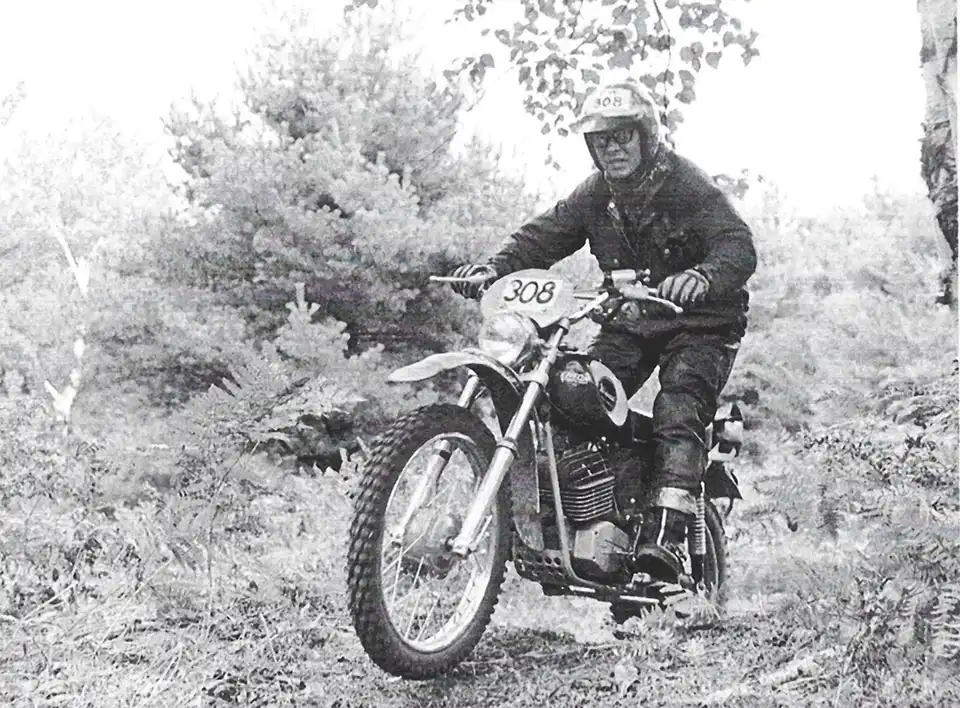
In 1972 you were the manager for the US trophy team in Czechoslovakia. What were some of the behind the scene job as team manager in the US before going overseas?
"You know this whole article is tough to do. Most all this stuff was done when my family was growing up without me. My wife is a saint and tolerated all of these times and very seldom got to enjoy what I was enjoying. I'm not proud of that, and I can't say it was all my doing. I just happened to be where I was at the time."
"The 1972 Trophy team was of course all on Pentons: Dick Burleson, Jeff Penton, Dane Leimbach, Billy Uhl, Carl Cranke, and Jack Penton. All young and talented. I had ridden with all of them quite a bit except Carl, and his credentials were outstanding. I had two objectives with the team, physical training and personal preparation. We ran at the local High School track a few times, and I had them change tires till everyone was under four minutes. At times it was fun. Behind the scenes, John and his manager Bob Mahutta were putting together a tour, a chartered plane, and 300 people (some to ride or tour the Danube, some to tour the KTM factory, some to go to Czecho. for the Six Days). The riders were to do a part of the Danube, go to the factory to prepare their bikes, then go behind the Iron Curtain to Czecho. We had wives and girlfriends, mothers and fathers, and my mom and dad whom had a great time. I don't remember having much time to visit with them."
"Logistics for the team was luggage. How to take all your riding gear and stay under 22 kilos (about 44 lbs.)."
What kind of changes were you trying to make to improve the trophy team's chances of winning over the previous years efforts?
"Unity. To be a team and not an individual, follow directions and believe in the planning. You ride as an individual, but you cannot forget that you are part of the team. Everyone tries to do the best he can possibly do. We did that and were awarded the "Watling Trophy"."
What were you involved with when you and the team arrived in Czechoslovakia?
"The team and the KTM factory support vehicles and people went to Czecho about five days before the event was to start. Our Hotel that was reserved for the Penton tour was still cleaning up to get ready for the tour which was due in about two more days. I have to say, you must remember that 1972 was before the Berlin wall came down. Crossing the border, into Czechoslovakia with the mine fields, machine guns, and iron gates was not an easy feeling. When we arrived in Spinderuv, the soldiers (officials of some sort) told me we had to stay in the riders hotel, at $9.00 per person, per day. I objected, saying we already had rooms at the Hotel in town with the tour group, and then took the riders and families to the Hotel in town. Little did I know about how the Red Army operated. But, if you are supposed to be in a certain place, they expect you to be there. At the "Penton Hotel", when everyone had their rooms, I went down to the lobby and was looking at a newspaper when in comes a General and three machine gun toting soldiers. He marched over to the desk clerk and started asking questions. Well, I don't understand Russian , but "Wilford" sounded pretty much the same and I wasn't going to stick around long enough to find out what he wanted. I played "Houdini" every time the General and his buddies showed up. This hide and go seek went on for three days until the FIM International Jury showed up and I pleaded with them to find out why I was a hunted man, and they fixed it. It was because my riders were not in the proper Hotel. Whew, not fun. I never saw the General or his companions again."
"We rode quite a bit of the terrain and the road race course before the start of the six days. In the preparation meetings the hardest part was, we did not know how to pronounce the names of the village we were to ride thru. We changed the names on the maps with like sounding names (example: CZ = Blmna / ours = Banana). It was a wet and miserable Six Days. I don't believe the sun ever came out while we were behind the wall."
Since your job was to manage the Trophy Team, how did you deal with the US non-team riders?
"Okay, I have heard I didn't make any friends. The people that know me, know I always try to be fair. But, when the game face is on, I am very serious. The whole tour was to be handled by others and all I had to do was take care of the team and the visas to Czecho. I somehow got to be the tour guide the first night in Vienna with rooming lists and bus schedules. By the time we got to the KTM factory, my fuse was a bit short. Somehow the team was blessed with some last-minute nylon lined throttle cables, two for each rider and a spare for the support truck. Taking care of the wants and needs of the team was a handful, and when I was approached by another US rider wanting the spare nylon cable, I told him to use a standard cable as a spare and my tone of voice was probably not too good. This story has been on the Internet, and I can't say the circumstances were the same I would do the same thing." What were you involved with during the Six-day event and what kind of problems were you faced with and how did you try to solve them?
"Every morning at the Pare Fenne, it was serve up the nerves time. As a rider, you pretty much only worry about your bike (do all the tires still have air, will it start, etc). As the manager, you multiply that by all the bikes and riders on the team. As each of your riders come to the line, it is prayer time, for their safety, and if the damn bike will start."
[Editor's note: at the ISDT events, riders were not allowed to start up their bikes in the morning until they pushed them up to the start time on their allotted starting time.]
"In those days, chase riders were not allowed, so I rode from checkpoint to checkpoint via short cuts to stay up with the riders and assist in any way possible. One day Dane had used his spare spark plug and wanted a couple of spares. Somebody had a flat and need another tube. There was always something during the day."
"At night, we had meetings to review our needs and the next day's course and schedules. I also had meetings with the AMA. One time we were protested and had to meet with the FIM Jury for using CO2 cartridges to put air in tires. None of the Europeans had ever seen them. We had the trick stuff. After the jury saw what the CO2 was, and not allowing the protest, it probably helped us get the Watling, that and the US Trophy Team riders taking all of the front row positions for the road race. We had ridden the road race course before the event and it was raining, so when all the other competitors went to take the practice lap , I had all of the Trophy Team stay in the start grid and then take the front row positions. This was okay as the rules stated, the practice lap was at the rider's discretion. This was not against the rules and showed good management."
How did the riders do during the event?
"Not good enough. As a team, we didn't win. Each and every one of these riders has at least one gold medal in the Six Days, and most, many more. But the whole team has to be gold and high in points of their class to win the Trophy Team Trophy."
Where you surprised when you and the team were awarded the Watling trophy?
"Everyone was surprised. The jury were the only people that knew ahead of time and the AMA jury guy didn't give us any clues. It is one thing I can be most proud of, managing the team that was awarded the "Watling Trophy ". This is something that no one else has ever done, in the US that is."
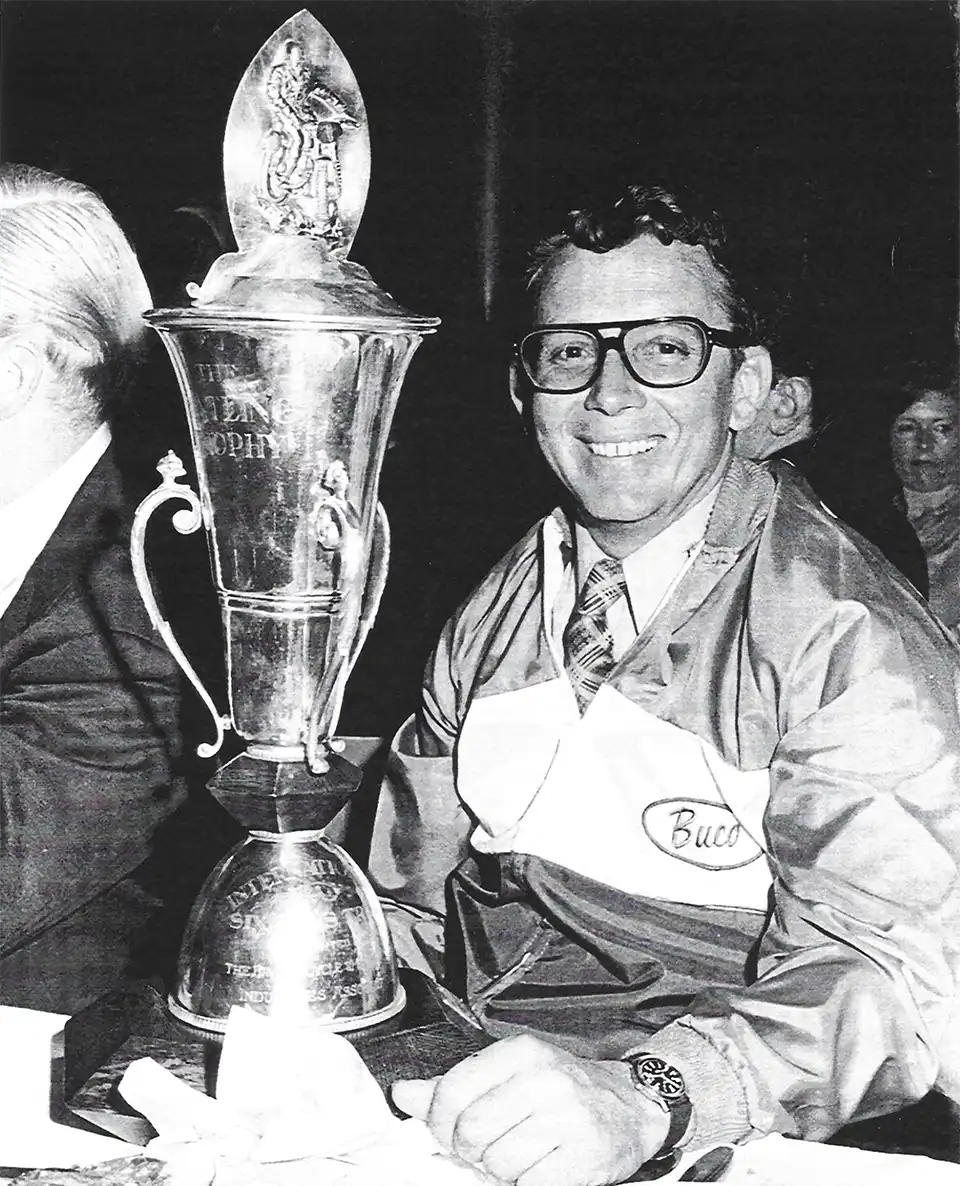
Photos
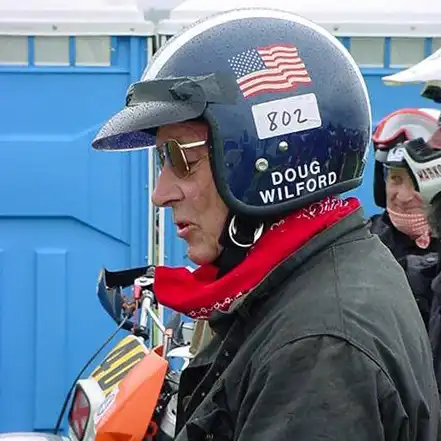
Photo by Bill Smith
